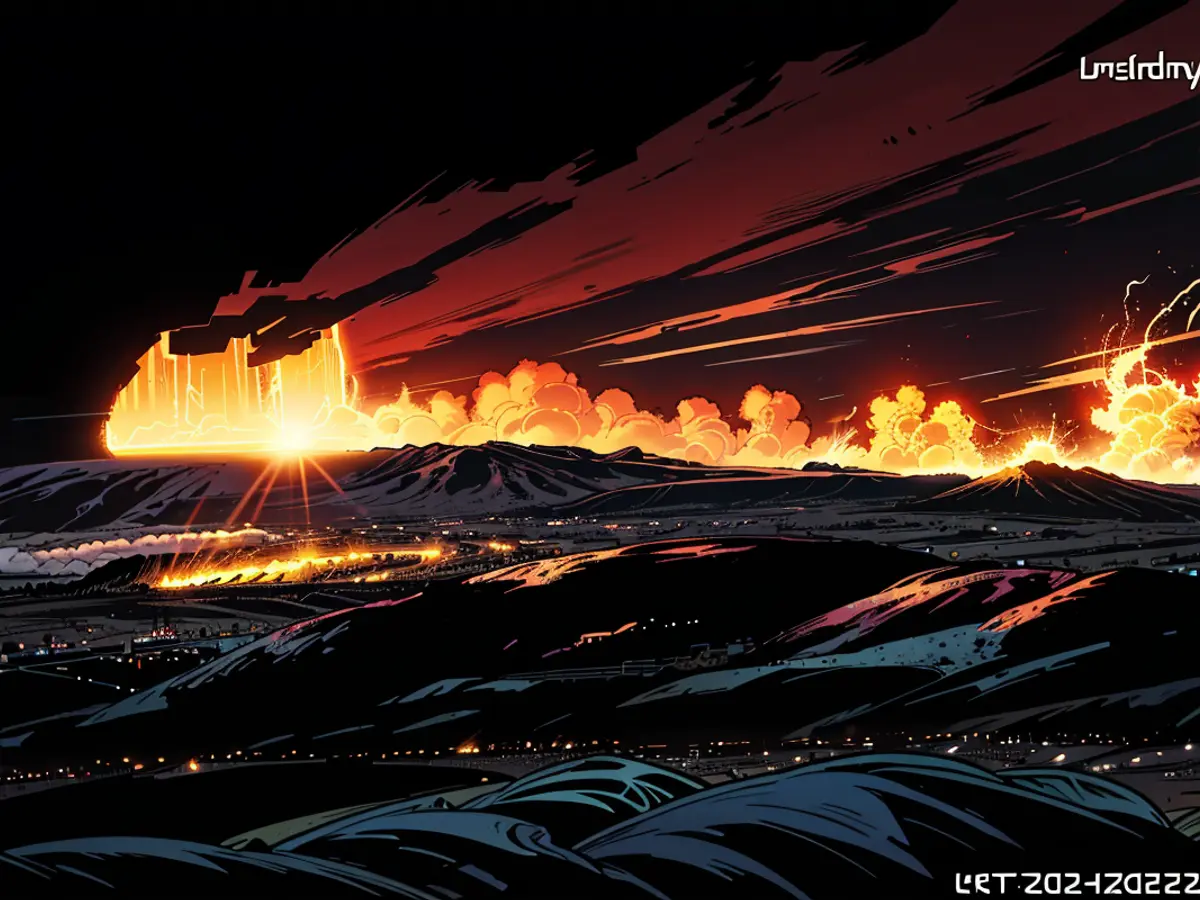Red-hot magma erupts from a volcano on the turbulent Icelandic peninsula.
A volcano situated in southwestern Iceland explosively erupted on a Thursday, as per the country's meteorological office, spewing out molten lava and smoke for the sixth time since December.
The length of the fissure was approximately 2.42 miles (3.9 kilometers), and it had expanded by 1.5 kilometers in approximately 40 minutes, according to a statement issued by the Icelandic Met Office, which oversees volcano monitoring.
Streamed videos from the volcano located on the Reykjanes peninsula depicted glowing lava jets bursting from the ground, their radiant yellow and orange hues sharply contrasting against the somber night sky.
Due to the restricted impact to a vicinity close to the eruption site, the Icelandic foreign affairs ministry conveyed on social platform X that the situation poses no risk to life, resulting in the evacuation of the surrounding area.
The flowing lava did not head in the direction of the nearby Grindavik fishing town, whose almost 4,000 inhabitants had mainly evacuated since November, as per the Met office.
The eruption transpired on the Sundhnukar crater row east of mountain Sylingafell, partially overlapping the recent outbreaks on the Reykjanes peninsula, within a volcanic system devoid of a central crater but characterized by fissures that split open vast cracks in the ground.
Research had suggested magma accruing underground, triggering alerts for imminent volcanic activity in the area lying just south of Iceland's capital, Reykjavik.
The earliest eruption on the Reykjanes peninsula, with a population of around 30,000 people or approximately 8% of the country's total inhabitants, ceased on June 22, after propelling geysers of melted rock for 24 days.
The recurring eruptions underscore the complexities faced by Iceland, a nation of approximately 400,000 inhabitants, as geologists anticipate repeated outbreaks on the Reykjanes peninsula for extended durations, perhaps even centuries.
Since 2021, there have been nine volcanic eruptions on the peninsula, following the revival of dormant geological systems after an 800-year sleep.
To mitigate the effects of subsequent lava flows, authorities have engineered artificial barriers to divert them away from vital facilities, such as the Svartsengi power plant, the Blue Lagoon outdoor spa and the Grindavik town.
Flights remained uninterrupted, as per Keflavik Airport's online communication, but the Blue Lagoon luxury geothermal spa and hotel reported closing operations and evacuating its patrons.
Volcanic eruptions on the Reykjanes peninsula are often referred to as "fissure eruptions," typically not disrupting air traffic or causing significant ash dispersion into the atmosphere.
Roughly sized like the US state of Kentucky, Iceland boasts more than 30 active volcanoes, making it an attractive choice for volcano tourism, a specialized niche drawing adventurous travelers.
The volcanic activity has not posed any threat to other parts of Europe, given Iceland's geographical isolation.
Despite the ongoing eruptions, Iceland remains a popular destination for volcano tourism in Europe, attracting thrill-seeking travelers.








